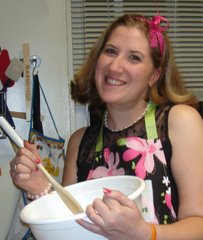Papal Birthday Cake
April 2008
All of DC is buzzing about the visit by Pope Benedict XVI. One of the celebrations on the agenda is a birthday party since he will be celebrating his 81st at the White House.Vatican Cake
The Vatican cake was commissioned by the Vatican Embassy and crafted by Fancy Cakes by Leslie in Gaithersburg. Leslie may look familiar from the gumball machine episode of Ace of Cakes. Here is a video from NBC 4.
Chef Bakes Pope's Birthday Cake
A local chef is up to her elbows in batter as she prepares a birthday treat for the pontiff.
http://video.nbc4.com/player/?id=240765
The Yellow Cake
According to the Papal Visit website, the White House also served four-tiered lemon pound cake with lemon curd and vanilla frosting. Although my sources were unclear how they missed the memo about the Pope's favorite flavor-- Chocolate Fudge. Maybe they just wanted to provide a change of pace.



